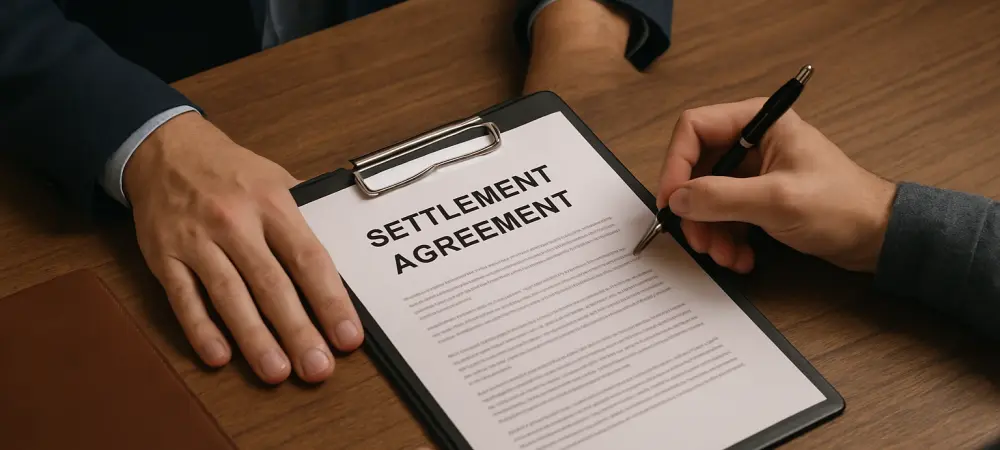I’m thrilled to sit down with Ling-Yi Tsai, a seasoned HRTech expert with decades of experience helping organizations navigate change through innovative technology. With her deep knowledge of HR analytics and talent management processes, Ling-Yi offers unique insights into modern workplace solutions. Today, we’re diving into the topic of settlement agreements, exploring their purpose, common scenarios, key components, and the benefits and challenges they present for both employees and employers.
How would you describe a settlement agreement to someone who’s never encountered one before?
A settlement agreement is essentially a formal, written document that outlines the terms under which an employee and employer agree to part ways or resolve a specific issue. Think of it as a roadmap for a clean break—it covers practical details like payments, end dates, and what each side agrees to say or do moving forward. It’s designed to provide clarity and closure, so both parties can move on without lingering uncertainty or conflict.
In what types of workplace situations do settlement agreements typically come into play?
They often arise in a few key scenarios. One common situation is during layoffs or restructures, where a company needs to eliminate roles due to financial or strategic shifts. They can also come up when there’s friction or a disagreement in the workplace, and both sides prefer a respectful exit over prolonging tension. Additionally, changes in business needs—like a role evolving or becoming obsolete—can prompt these agreements as a way to transition smoothly.
Why do you believe both employees and employers see value in using settlement agreements to resolve issues?
For employees, it offers a clear path forward with defined terms, like a financial cushion or an agreed-upon reference for future job searches. It reduces ambiguity about what happens next. For employers, it’s about efficiency and certainty—they can close a chapter quickly, avoid potential disputes, and focus on planning for the future. It’s a mutual way to draw a line under a situation without dragging things out.
Can you share how often settlement agreements are used during layoffs or major company changes?
They’re quite common in those scenarios, especially in larger organizations or industries facing economic pressures. During layoffs or restructures, companies often use settlement agreements to standardize the exit process for affected employees. It helps manage the transition with less risk of legal challenges or bad feelings, and I’ve seen them used frequently as a tool to ensure fairness and transparency when multiple roles are impacted.
Could you walk us through a specific example of when a settlement agreement might be used to address a workplace disagreement?
Absolutely. Let’s say there’s a mismatch between an employee and their manager over work expectations or performance feedback, and it’s creating ongoing tension. Rather than letting it escalate into a formal grievance or worse, both sides might agree to part ways. The settlement agreement would outline terms like a final payment, a neutral reference, and confidentiality to ensure neither party speaks negatively about the other. It’s a way to resolve the conflict respectfully and avoid a drawn-out battle.
What are the core elements that usually make up a settlement agreement?
There are several standard components. You’ll typically see details about a settlement payment, which is a one-time sum to support the employee’s transition. There’s also the final working day, which marks the official end of employment. Other elements include whether the employee works their notice period or gets paid instead, how unused vacation time is handled—often paid out—and agreements on returning company property like laptops. Confidentiality clauses and non-disparagement terms are also common to protect both sides’ reputations.
Can you explain the role of confidentiality in these agreements and why it’s so important?
Confidentiality is a cornerstone of most settlement agreements because it keeps the details private. For the employee, it means not sharing the terms or reasons for leaving with others, which can protect their personal story. For the employer, it safeguards sensitive business information or potential reputational risks. It’s about ensuring that what’s discussed or agreed upon doesn’t become public gossip or fuel misunderstandings—it’s a mutual shield for both parties.
How does the process of negotiating a settlement agreement usually unfold?
It generally starts with the employer presenting a draft agreement to the employee. There’s usually a window of time—often a few days to a couple of weeks—for the employee to review it and ask questions. Discussions follow, where both sides clarify terms or negotiate adjustments. This might involve HR, a manager, or sometimes an advisor for the employee. If everyone agrees, the document is signed, and the outlined plan is put into action. It’s a structured but flexible process depending on the situation.
What are some of the key benefits for an employee when they sign a settlement agreement?
For employees, the biggest advantage is clarity. They know exactly when their employment ends, what payments they’ll receive, and often have an agreed-upon reference for future job applications. It can also provide a financial buffer to ease the transition to a new role. Emotionally, it offers a sense of closure, allowing them to move forward without unresolved issues hanging over them.
What advice do you have for our readers who might be navigating a settlement agreement in their workplace?
My advice is to take your time and fully understand the terms before signing anything. Read the document carefully and don’t hesitate to ask questions or seek independent guidance if something isn’t clear. Make sure you’re comfortable with the financial and practical aspects, like your final day or confidentiality clauses. Also, think about your next steps—update your resume, plan your budget, and focus on what’s ahead. Approach the process with a calm, professional mindset, and remember it’s about finding a resolution that works for you.

